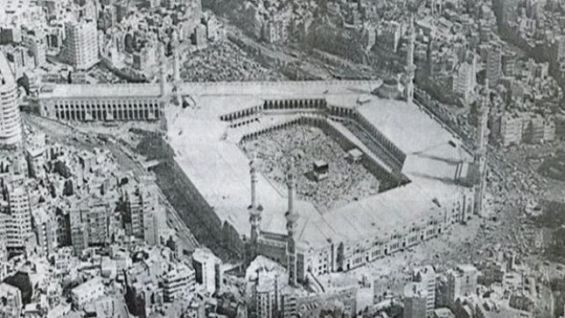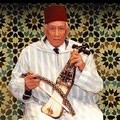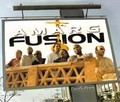On November 20, 1979, Islam’s holiest site was raided by hundreds of men led by Saudi extremist Juhayman al-Otaybi. The group seized Masjid al-Haram, in an attempt to protest against the Saudi monarchy.
Before plotting the operation, a salafist group (the Salafi Group that Commands Right and Forbids Wrong) was established in Saudi Arabia, trying to fight against corruption. As a prominent member of the group Juhayman al-Otaybi declared that he opposes the Saudi dynasty and the House of Saud, headed at the time by King Khalid bin Abdul Aziz.
 Juhayman al-Otaybi./Ph. DR
Juhayman al-Otaybi./Ph. DR
In his book researcher Nasser al Hazimi, who was tied to the real mastermind behind the group, explained that the group started to plot the Grand Mosque seizure one year before the incident.
Members of the Salafist group first, declared that one of them is The Mahdi, an eschatological redeemer of Islam who will appear, will rule for years before the Day of Judgment and will rid the world of evil.
One of the group’s members namely, Mohammed bin Abduallah Al-Qahtani, was chosen to carry the title of the Mahdi. Nasser al Hazimi recalled in his book «Days with Juhayman… I was a member of the Salafi Group that Commands Right and Forbids Wrong» that al-Qahtani was not really convinced of the idea at the begining but later was fully committed to it and planned how the group can enter the mosque and take control of it.
Breaking into the Masjid al Haram
The group carefully plotted the Mosque’s seizure. Weapons were sneaked in by some members who pretended that they were there to pray, via coffins and then through vehicles carrying water.
As soon as the Fajr prayer was over, members of the group took over the mosque, shouting in its main microphone the main reasons of their raid.
Worshipers tried to flee the mosque but they realized that the doors were locked and were forced to stay. A member of the group delivered a speech shortly after the seizure, backing the raid by verses from the Quran and Hadiths proving the appearance of the Mahdi.
Immediately after that, Juhayman and his followers forced hostages to pledge allegiance to the group’s Mahdi Mohammed bin Abdullah al-Qahtani.

Shocked by the news, Saudi Arabia tried to control the situation, sending troops to Mecca in order to seize back the holy mosque. However, Saudi forces were met by bullets when trying to break into the mosque. Gunmen surrounded the area and opened fire at them.
Three days after the Grand Mosque seizure, Abdullah al-Qahtani, who was believed to be the Mahdi, was shot to death. This was a great shock to his followers, who believed that he was «immortal» and that the Saudi army could not kill him.
The siege lasted for two weeks before the Saudi Special Forces managed to break into the mosque with the help of Pakistan’s Special Services Group and the French Special Forces which provided a special tear gas.
Back to normal
According to Saudi official reports, 12 officers, 115 soldiers and 26 civilians were killed. Among the followers of Juhayman, 117 people were killed and 61 were subsequently executed. 19 people were arrested and 23 children and women were released.

On the 9th of January 1980, Juhayman was executed by the Saudi authorities. After kicking out Juhayman and his men from the mosque, the Saudi monarch attended the Maghrib prayer and on the following day, more than 150,000 worshipers went to the Grand Mosque to attend the Friday sermon.





 chargement...
chargement...













